Second Line on Island Time
Galveston’s long-running Mardi Gras is big, bold, and family friendly
Photographs by Pooneh Ghana
Old meets new at Mardi Gras! Galveston, whether partiers are attending a masked ball or leaping through the streets.
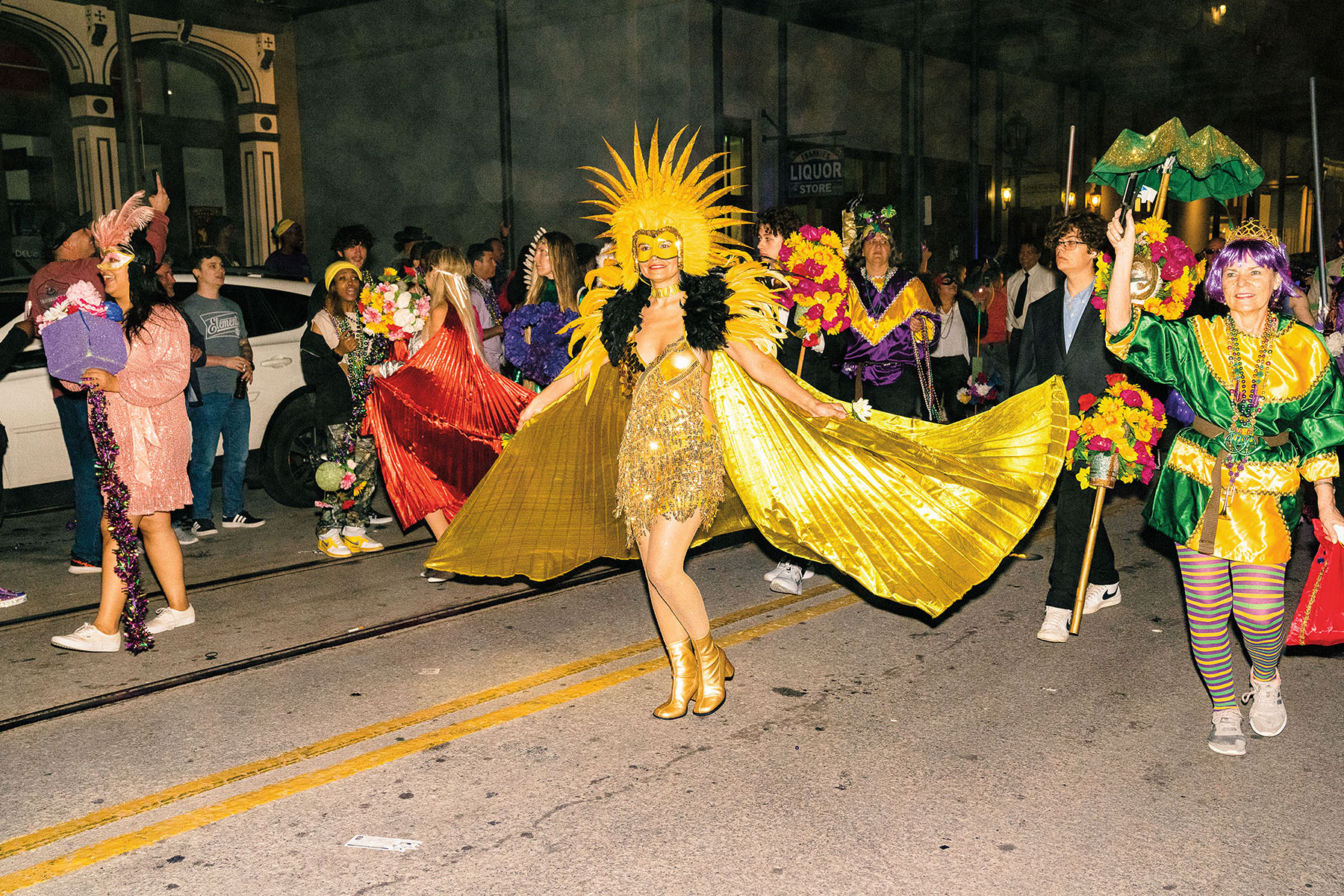
Costumes, such as this elaborate golden number, take months to assemble.
“Anyone can be a misfit!” is the slogan of the Krewe de Isle of Misfits, who ride each year through Galveston’s Fat Tuesday parade atop a double-decker float made from an old school bus. But it might easily be the slogan of the Mardi Gras! Galveston celebration itself. Whether you’re sporting an oversize, gold, feathered ruff to proclaim your individualist status or just feverishly decorating a golf cart or umbrella in decidedly impractical fashion, you’ll fit right in among revelers of all ages and levels of creativity at Texas’ largest Mardi Gras celebration.
Mardi Gras! Galveston has existed in some form as long as the historic port city itself, which was incorporated in 1839. The event’s history dates to the early 19th century when French pirates Louis-Michel Aury and Jean Lafitte tried to seize the island. In 1856, Galveston’s founder, Michel Menard, hosted the city’s first Mardi Gras ball at his house. As the city and port grew, so too did its decadent celebration, spreading to the streets in 1871 and ebbing and flowing with the city’s fortunes since. Today, it is one of the largest Mardi Gras events in the country, with organizers planning for more than 350,000 attendees over nearly two weeks.
Pooneh Ghana, an acclaimed music photographer who grew up in San Antonio and got her start in Austin, traveled to Galveston to document the scene on Fat Tuesday in 2023. “I approached the event similarly to how I approach a music festival,” says Ghana, who has shot festivals ranging from Austin City Limits to Glastonbury to Lollapalooza. “I just come in as a fly on the wall and see where the night takes me. This felt a little more rogue in some ways—and I was outside of my comfort zone—but I was immediately made to feel very welcome.”
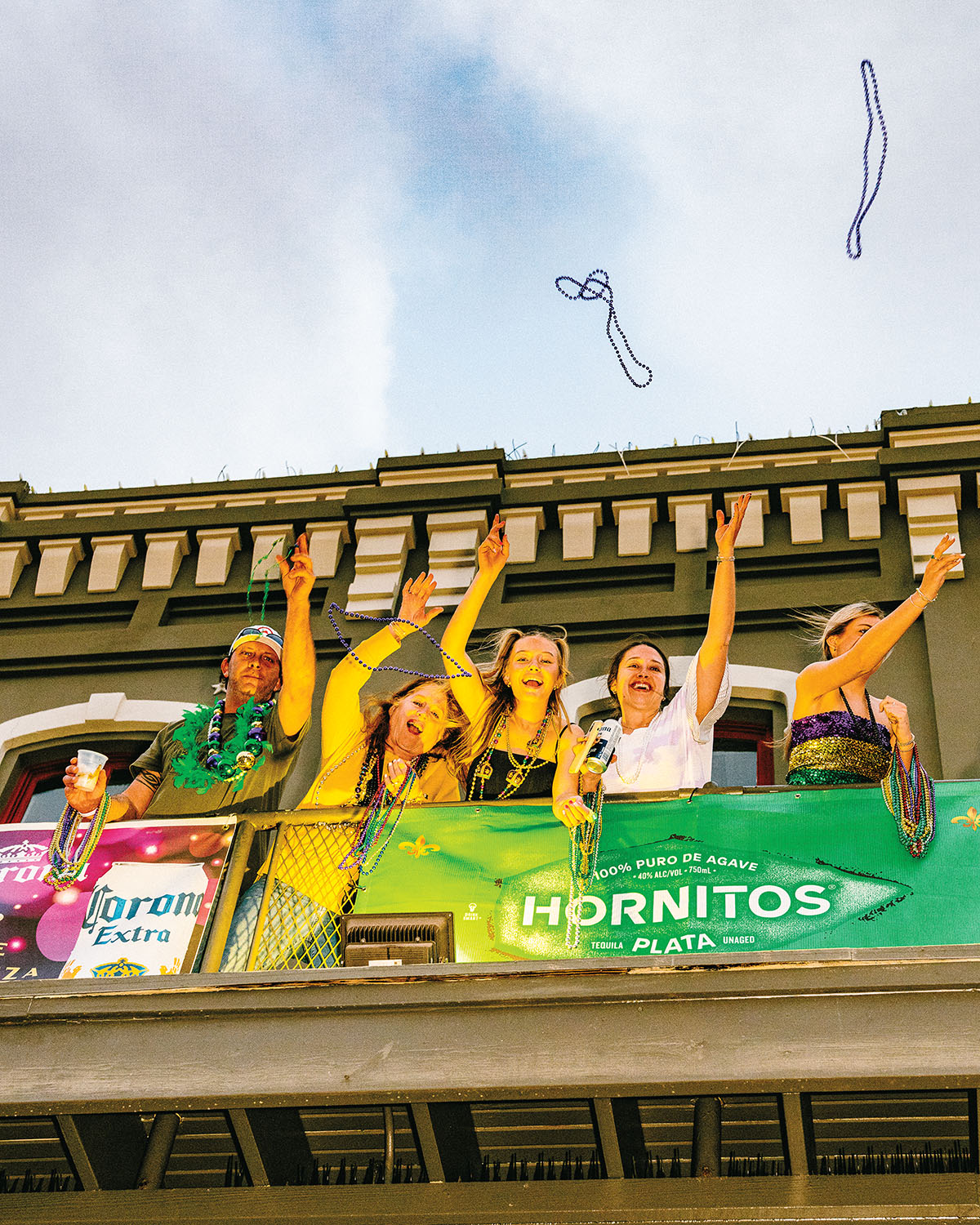
Festivalgoers can pay extra for access to balconies along Strand and Mechanic streets.
Mardi Gras! Galveston features around two dozen parades over 12 days. It also includes romps that range from the Krewe of Barkus and Meoux (that’s dogs and cats, in non-Mardi Gras speak) to the Funky Uptown Umbrella Brigade, which set the Guinness World Record for Largest Umbrella Dance in 2011 and 2012. The festivities include processions that are open to the public, like the Zaniest Golf Cart Parade. There are also ones showcasing the festival’s rich history, such as the parade by the Knights of Momus, a krewe that dates Galveston’s first Mardi Gras.
Ghana was prepared for overwhelming crowds and chaos, but she found something totally different. “I was expecting to go into the eye of the storm,” she says. “Instead, it was like there was a time for it. The streets were empty, and then suddenly people showed up and it was madness. But still, it felt family friendly.”
Around 6 p.m., crowds gathered along five-block stretches of Mechanic and Strand streets. Some folks were on the balconies lining the streets or sitting at tables outside the neighborhood’s bars; others clamored for beads—the common garb of adults, kids, and even dogs—as floats went by. Cajun and Creole delicacies abound even on this part of the Gulf, with gumbo, crawfish, and boudin readily available along with hurricanes and other festive drinks. Visitors can also find king cake at bakeries around the city.
“It’s a Galveston family affair,” says Joan McLeod, Honorary Royal Trustee of the Knights of Momus. She has attended Mardi Gras! Galveston since its return in 1985 after a hiatus beginning in 1942 due to World War II. “Bringing back the festival reignited Galveston’s love of partying. We love to dress up. Everybody looks forward to the fun and frivolity that breaks up the cold and rain of Galveston winter.”
More than a dozen krewes specific to Galveston show off the city’s eccentric side, allowing people of all ages to let loose alongside familiar parade fare like high school marching bands and dance teams. “There’s this magic happening out there,” Ghana says. “It was similar to a music festival in a lot of ways, just seeing those fun moments unravel in front of you and capturing them as authentically as possible.”
When people think of Mardi Gras in America, New Orleans is tops. But Galveston has a storied celebration, which might be an unexpected revelation to many Texans. “It’s refreshing to know there are some people who don’t take themselves too seriously,” Ghana says. “Like, there’s still some lightheartedness and some weirdness in the state.” —Natalie Weiner
Mardi Gras! Galveston, Feb. 2-13
Tickets available at mardigrasgalveston.com
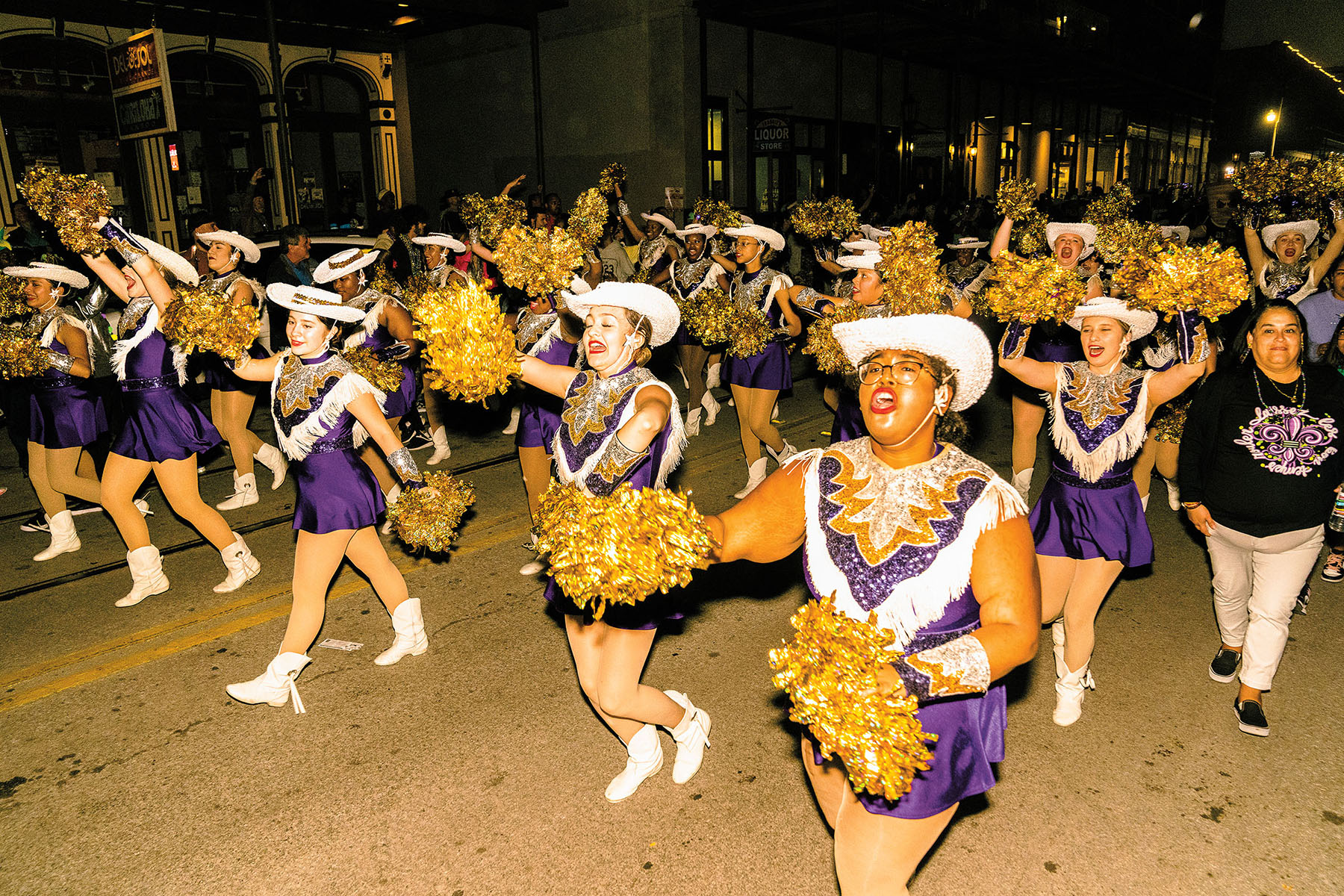
Galveston’s Ball High School Tornettes participate in at least seven parades every Mardi Gras. “That entire routine, they’d probably been practicing for months,” photographer Pooneh Ghana says. “They’ve spent a year putting the floats together. It’s so amazing experiencing how much effort goes into such a quick celebration.”
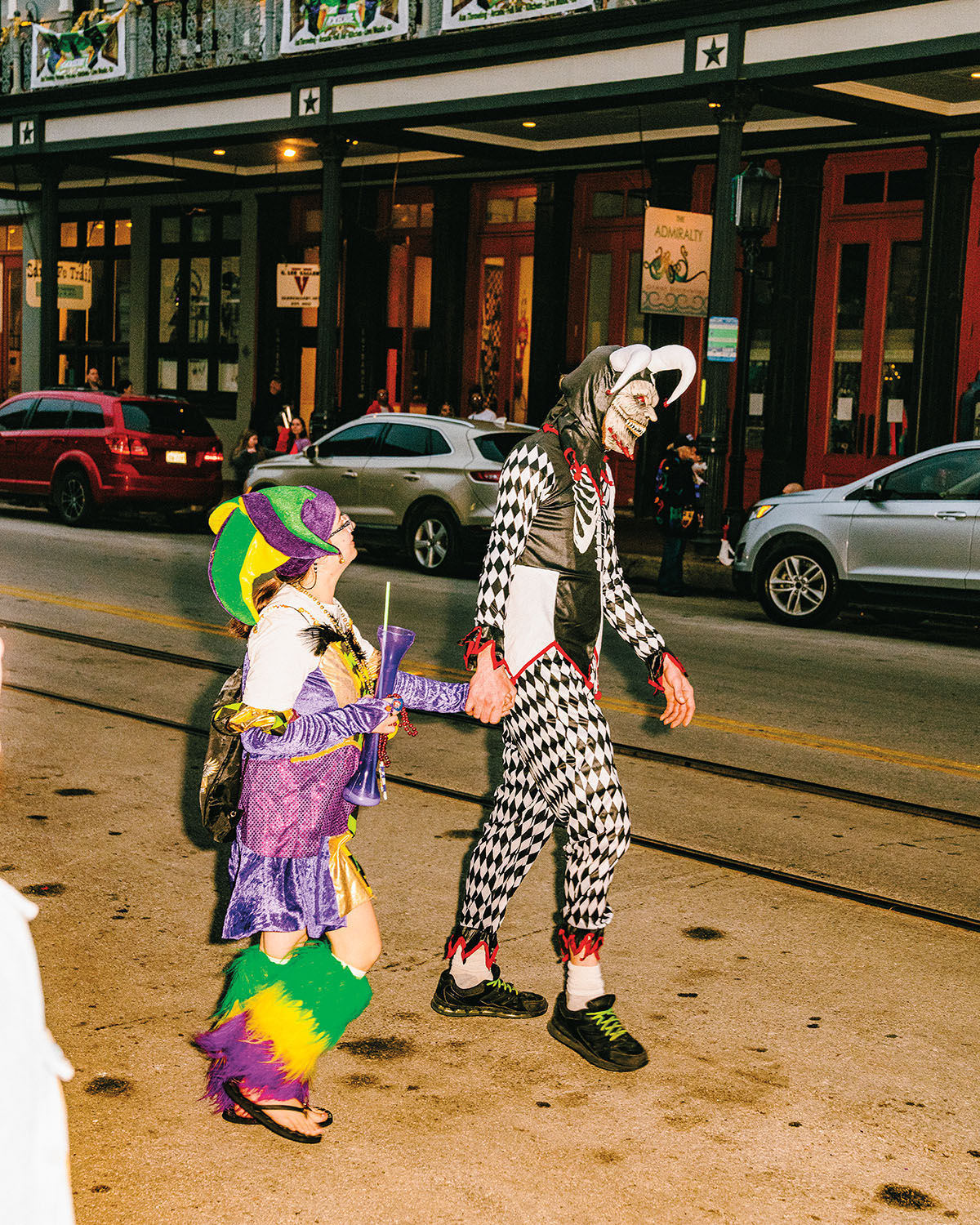
The unusual becomes standard during Mardi Gras, as demons and revelers of all types take over Galveston’s historic downtown.
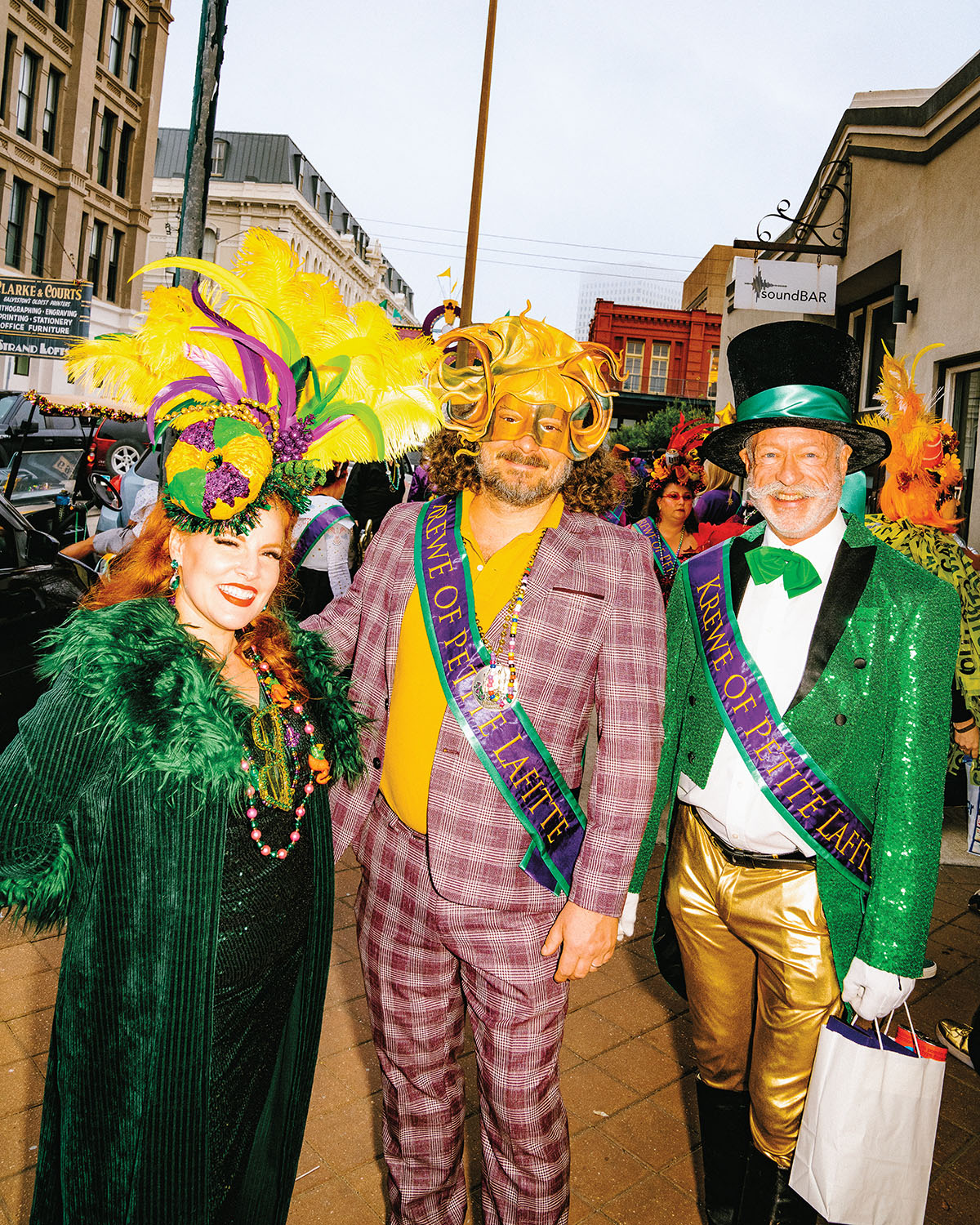
The Krewe of Petite Lafitte specializes in “shoebox floats.” These smaller displays, about the size of a little red wagon, have included entries like the Dale’s Dead-Bug extermination van from King of the Hill.
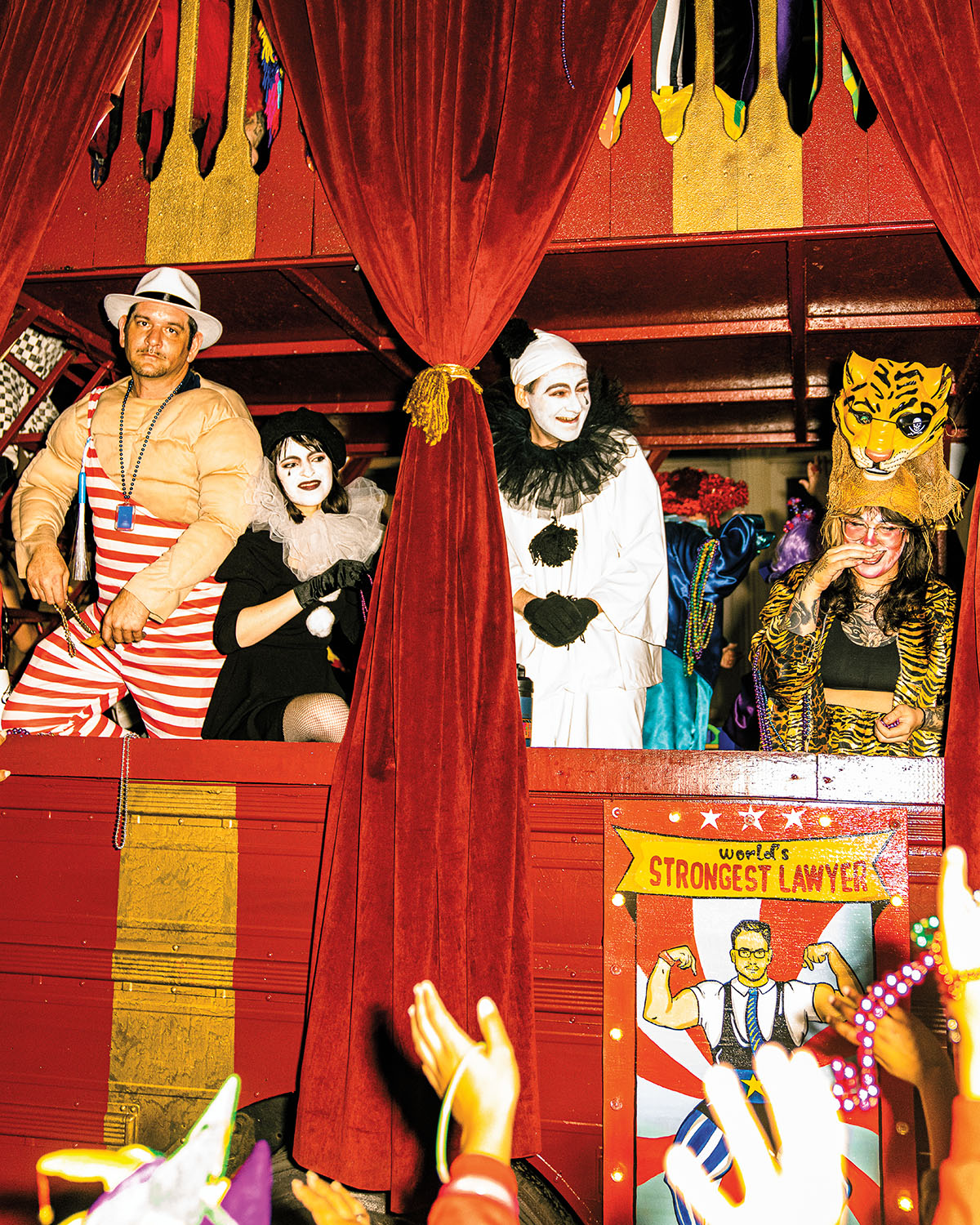
The Krewe de Isle of Misfits wear their eccentricities on their fancily adorned sleeves—and in their name. They ride atop a float made out of an old school bus. The group hosts an annual ball as well as year-round movie screenings.
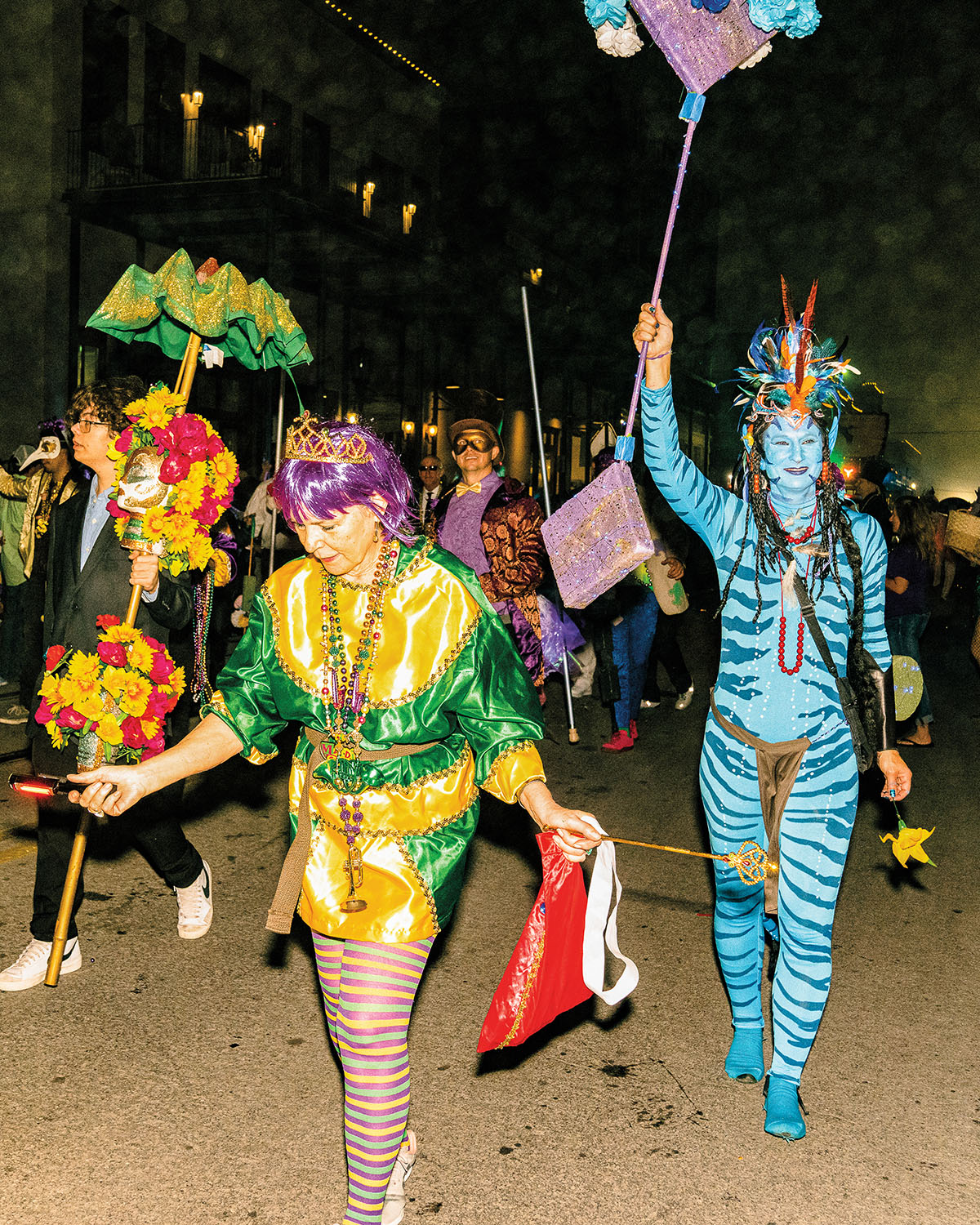
Elaborate costumes are, of course, encouraged at the festival, whether participants sport the traditional purple, green, and yellow, or dress as characters from James Cameron’s Avatar.
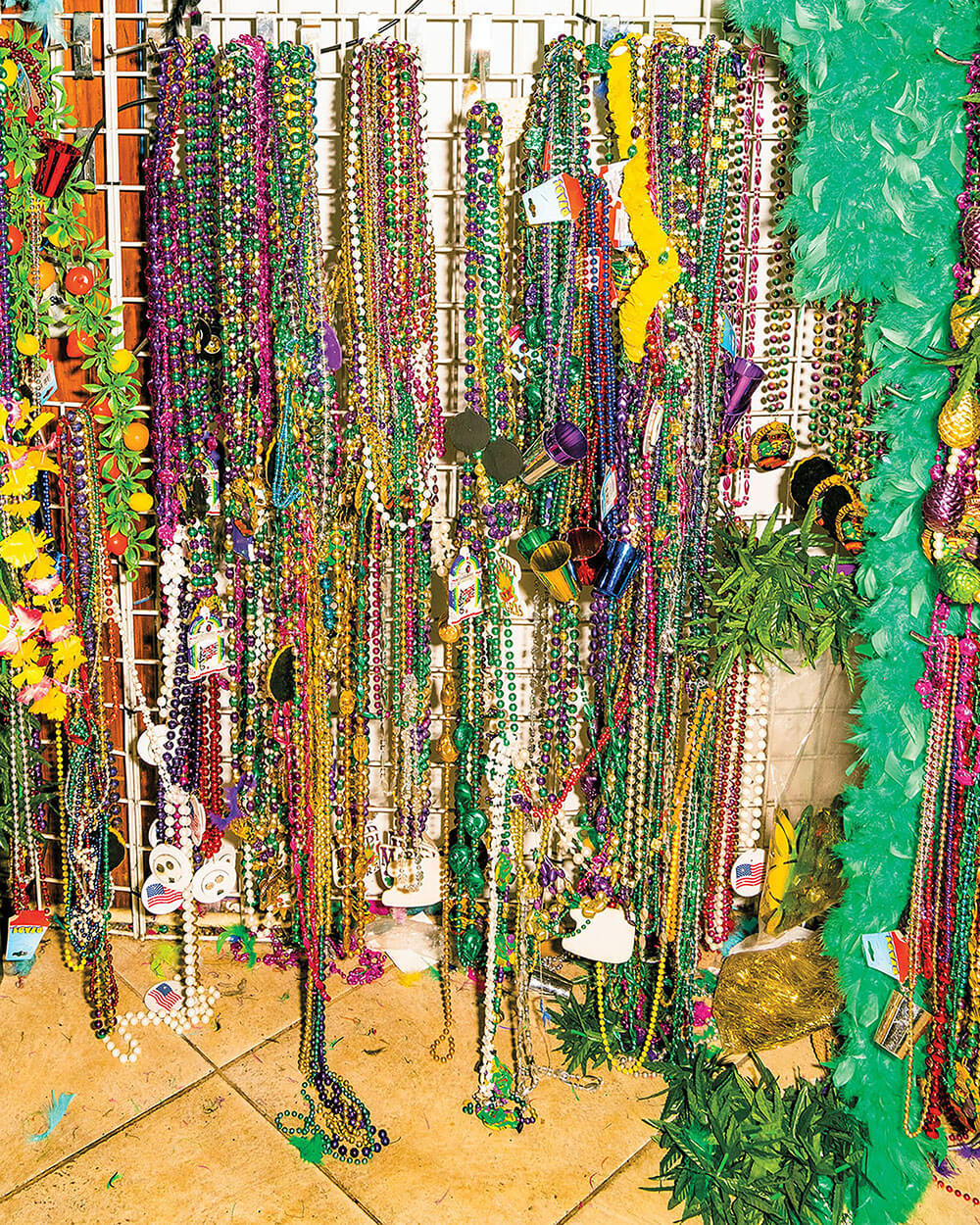
“There were so many kids with so many beads around their necks. I don’t know how they were holding their heads up!” Ghana says. For the second year in a row, students at Ball High School helped collect used festival beads. They sanitize the beads, repackage them, and sell them as a fundraiser for the school.
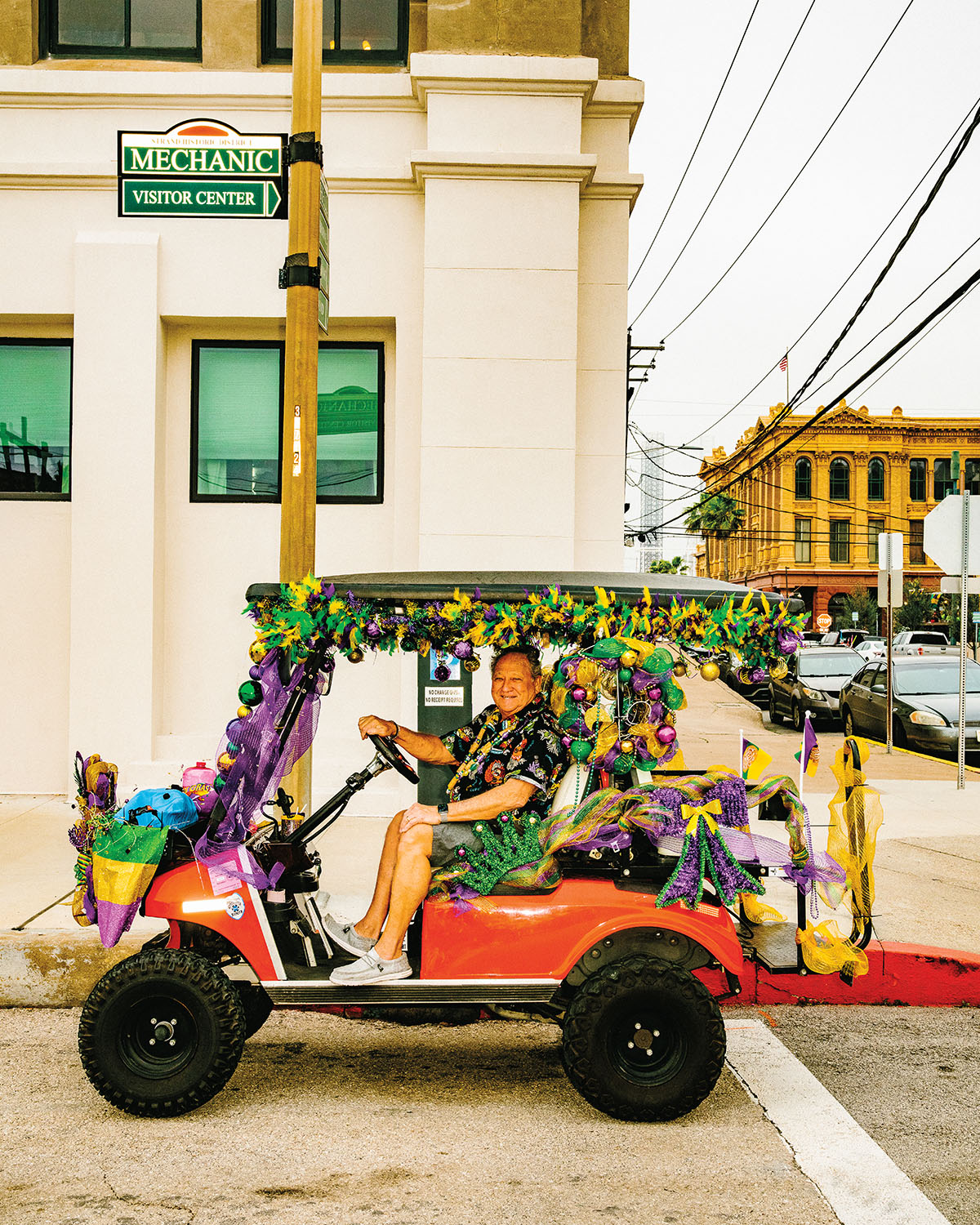
In the annual Zaniest Golf Cart Parade, participants compete for balcony tickets in a cart-decorating contest.
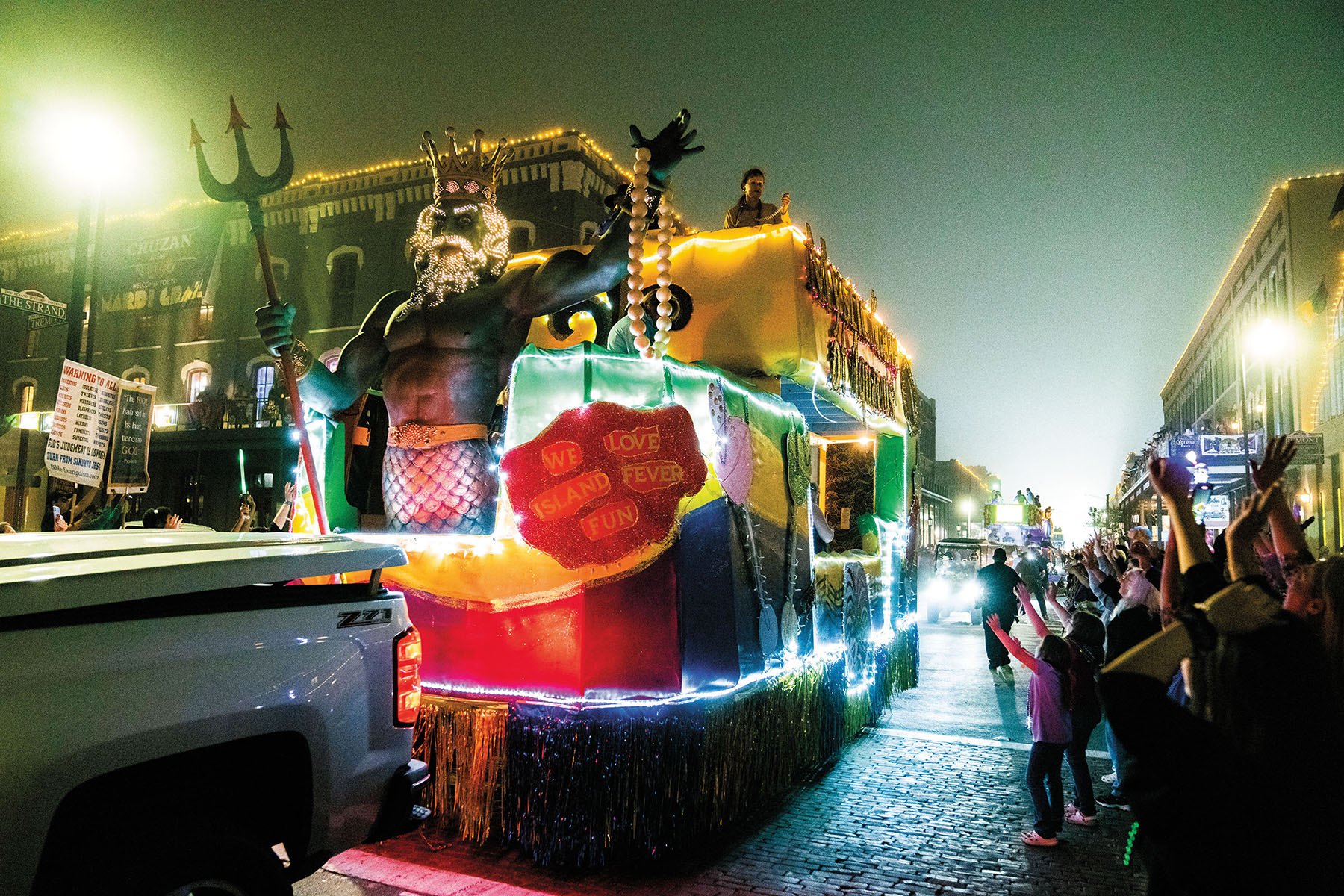
The Mystic Krewe of Aquarius is one of Galveston’s oldest krewes. It hosts two parades: one on the first weekend of Mardi Gras festivities, and one during the festival’s finale on Fat Tuesday.








